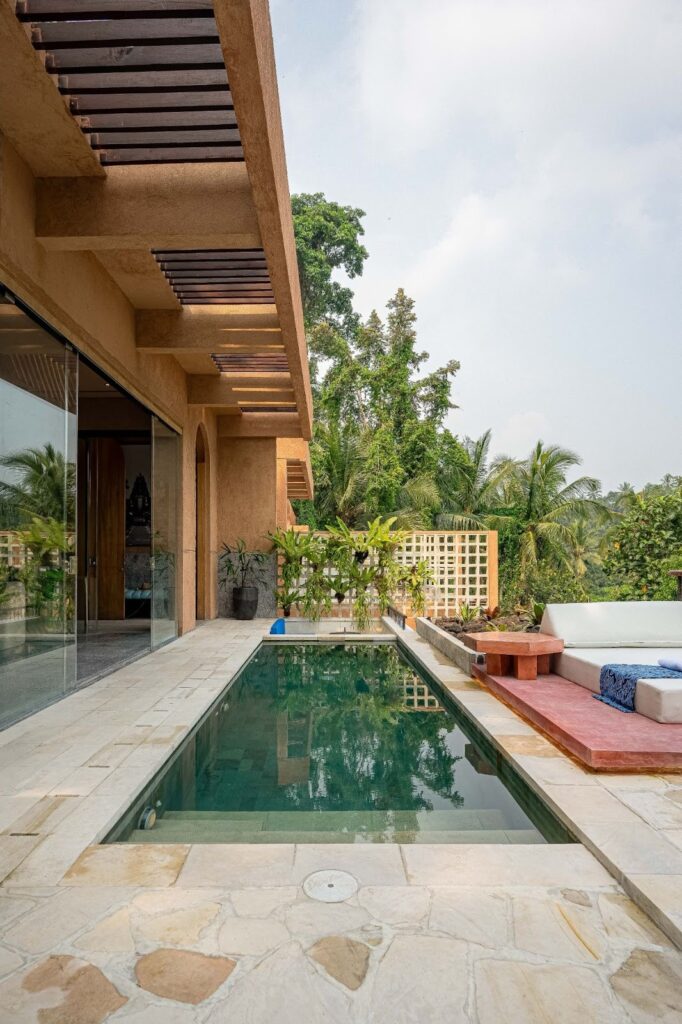Students Design Off-grid ‘Circular Tiny House’ Using Cradle-to-Cradle Principles
The making field is just one of the major emitters of carbon, accounting for additional than a third of electrical power use, and 39% of vitality and method-linked carbon dioxide (CO2) emissions around the globe. That has prompted lots of to check with the all-crucial issue: How can we structure and construct buildings that are much more electricity-economical, low in embodied carbon, and resilient? Numerous pupils from all around the entire world are carefully using up this obstacle, and in the system, checking out intriguing options like progressive insulation techniques, zero-waste mushroom-primarily based building supplies, minimalism, tiny place dwelling, and cellular strength education and learning centers.
Around at the Coburg University of Used Sciences and Arts in Germany, graduate design pupils have been tasked with answering that very problem of how to build far more sustainably. The outcome is the Circular Tiny House (or shortened to CTH*1), an experimental 204-sq.-foot (19-square-meter) off-grid micro-house that is produced with recycled and renewable supplies, and strives to be carbon neutral, in addition to being based on cradle-to-cradle concepts.
What Is Cradle-to-Cradle?
Cradle-to-cradle (C2C) is a way of creating goods or processes that perform additional like organic systems. This style system is intended to switch a make-take-dispose technique which begins with new uncooked products mined from the earth and finishes with piles of garbage. Cradle-to-cradle as a principle is normally credited to Swiss architect Walter Stahel. Right now, the time period “cradle-to-cradle” is a registered trademark of McDonough Braungart Style and design Chemistry (MBDC) consultants.
As the designers of this venture make clear, the undertaking was prompted by a series of seminars, as very well as expanding requires for sources in Germany, and about the planet:
“[The] development sector is liable for 38 percent of all CO2 emissions globally for an enormous and regularly escalating consumption of resources, and, for case in point, in Germany for all over 55 % of all waste. The consistently escalating demand from customers for living room for every capita — the typical is at this time 48 sq. meters [516 square feet] in Germany — removes all progress in sustainability via the rebound influence. And is all the things proper what we compute in phrases of energy consumption, etcetera.?”
Sebastian Kolm and Markus Pollach
In critically examining these challenges, alongside a lengthy time period examining different city scheduling situations, it grew to become apparent to the learners that micro-housing will make the most sense in densifying interior metropolitan areas by way of urban infill, whether or not that might be on top rated of structures, parking lots, or other underneath-utilized residual areas.
Hence, this Round Tiny House prototype is not meant to be designed on new land on the outskirts of metropolitan areas, hence exacerbating urban sprawl somewhat, it has been developed in a parking whole lot, which also interprets to a prospective reduction in auto website traffic.
Sebastian Kolm and Markus Pollach
A further massive question for the budding designers was what was an “appropriate amount of comfort,” which they decided to be a mattress for two, a wardrobe, a place for operating in, a “micro-toilet,” a sitting space, and a compact kitchen area that has been optimized for motion and area. All these critical features were bolstered by the inclusion of “smart” and versatile furnishings that could at least host 4 friends.
Sebastian Kolm and Markus Pollach
The open up approach structure is distribute out around two concentrations, with a loft overhead to enable augment usable ground location about the exact same footprint.
University of Coburg
To keep expenses reduced, and to make certain that the making was uncomplicated to assemble and disassemble, the Circular Little Home was made virtually exclusively with renewable products like wood, straw, and clay. All of the constructing products were being sourced locally, these as clay, chalk, and salvaged home windows from a setting up demolition nearby, in addition timber that was only a bit ruined by bark beetle, but continue to looks rather attractive. The style and design staff averted the use of developing products that are carbon-intensive, like concrete.
Sebastian Kolm and Markus Pollach
Likewise, as a substitute of a concrete foundation, the Circular Little Home is hooked up to the Earth by means of floor screws, building it less complicated to dismantle and relocate. That part is even further facilitated by the reality that the micro-house employs no glue or nails, and can be disassembled with a easy drill. Even the clay and straw insulation in the partitions can be inevitably reused, by plowing it back again into the ground.
The prototype is designed to accumulate rainwater and is powered by 12 rooftop solar panels, which demand a 9.6 kWh electric power storage unit, thus giving electricity for all the micro-home’s heating, scorching h2o, and appliances. In the celebration of excessive solar electric power, it would be doable to present charging to e-bikes on campus for absolutely free. As Rainer Hirth, the professor who oversaw the venture, notes:
“When deciding upon the constructions and elements, expense aspects and the implementation in self-construction have been decisive criteria, in addition to the circular types.”
Sebastian Kolm and Markus Pollach
Soon after its completion last calendar year, the system is to have the Round Small Residence prototype stand for at minimum five a long time even though pupils keep track of different areas of its daily life cycle and procedure, such as energy and h2o use. Until finally then, the compact composition will serve as a “exam laboratory” of kinds, as very well as a visitor accommodation for the university’s Faculty of Structure, although there is a likely second period for growing its style in the future.
To see additional, stop by Hochschule Coburg.






